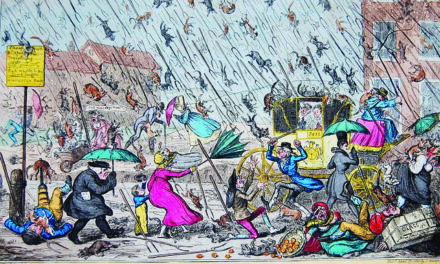The Cotswolds (often wrongly called The Cotswold Hills) is an 800-square-mile designated Area of Outstanding Natural Beauty in the middle of England, extending into all or parts of six counties: Worcestershire, Warwickshire, Gloucestershire, Oxfordshire, Wiltshire and Somerset. The honey-colored, picturesque stone villages, scenic agricultural landscape, and rich history captivate visitors from around the world. Each year, the area hosts around 25 million of those visitors, and quite possibly you may have been one of them at some time past. So was Henry Ford.
Almost 2,000 years before Ford’s visit, Julius Caesar had come, seen and “won” Britain in 55 BCE, succinctly captured in his laconic “Veni, Vidi, Vici” quote. However, he left immediately and it wasn’t until 43 CE that the Emperor Claudius mounted a sustained invasion. Nearly two centuries later, the Cotswolds was being settled with Roman villas, sequestered among the folds of the rolling fertile countryside, and Cirencester (Corinium), Bath (Aquae Sulis) and Gloucester (Glevum) among others, all in the Cotswolds, were Roman strongholds. Their legions marched along straight roads across the verdant landscape, some of which, in their modernized form, still exist today.
“You can even be served afternoon tea in the cottage garden, though I can’t vouch for its authenticity.”
Many of us like to come back from a vacation with some keepsake of our travels to put among our memorabilia, be it a rudely captioned mug or an attractive pebble found in sea or stream. Henry Ford was no exception, except that, as we all know, Ford thought big! In 1929, he had founded a museum in Dearborn, Michigan, called Greenfield Village, to collect objects that were being lost to a changing society. He was so besotted with the Cotswolds, he decided he wanted a piece of it to take home to Michigan and he commissioned his English agent, one Herbert Morton, to find a representative building and buy it. Morton found one in Chedworth, Gloucestershire, just eight miles from where I am writing this. Though quite large by local standards, it was called Rose Cottage since, when wet, people thought its stone had a certain rosy tint. Chedworth is the very place a wealthy Roman noble built his luxury villa 1,800 years before (the first evidence of that had been discovered in 1846). Today, the bones of Chedworth’s sizeable villa and farm belong to the British National Trust and new discoveries are often made following further excavation. It is a fascinating place to visit; the villa must have been luxurious for it sported intricate, decorative floor mosaics, rooms with underfloor heating, and warm and cold plunge baths. Artifacts from across the Roman empire have been discovered there. All of this can be seen today.
Ford’s Rose Cottage, selected by Morton and bought for £500 ($624) in 1929, had none of those attributes. It was dismantled stone by stone, beam by beam—doors, stairs and windows—and packed in 506 sacks and 211 large crates. It weighed about 450 tons and needed 67 railway wagons to transport it to the docks for shipping to New Jersey. Morton made a few small changes to the structure, but nothing to detract from the accuracy of the Cotswold image.

Photo: Henry Ford Museum
At the time, The Times newspaper reported that the locals were not impressed by Ford’s project and were quite indignant at the loss of the cottage. It was the most expensive project at Greenfield, outdoing both the Wright Brothers’ shop and Thomas Edison’s Laboratories, which Ford also bought. Ford even temporarily imported a few Cotswold sheep and two local craftsmen, a stonemason and a carpenter, to oversee the reconstruction work, which was completed in three months at the end of September 1930. You can see the front wall of the cottage’s garden as it appears today at the top right of Greenfield Village’s masthead on their current website. It is a typical dry-stone wall of a type that is found throughout the Cotswolds. The museum is visited by millions of Americans each year at its site in Michigan. You can even be served afternoon tea in the cottage garden, though I can’t vouch for its authenticity.

Photo: Henry Ford Museum
By the way, to call the area in England The Cotswold Hills is incorrect because it would be redundant: a wold is a hill. ‘Cot’ in this context refers to ‘sheepcote’—a small structure for sheltering sheep. Since medieval times (and to this day), the area has been known for the quality of its fleeces, and back then, much of the area’s wealth came from fleeces exported right across Europe. Nowadays, you would be hard put to purchase a sheepcote in the Cotswolds for £500, let alone a cottage. If you want something better, you should bring at least $1m and, if you like space, $2m or more!
© David Cuin 2023



